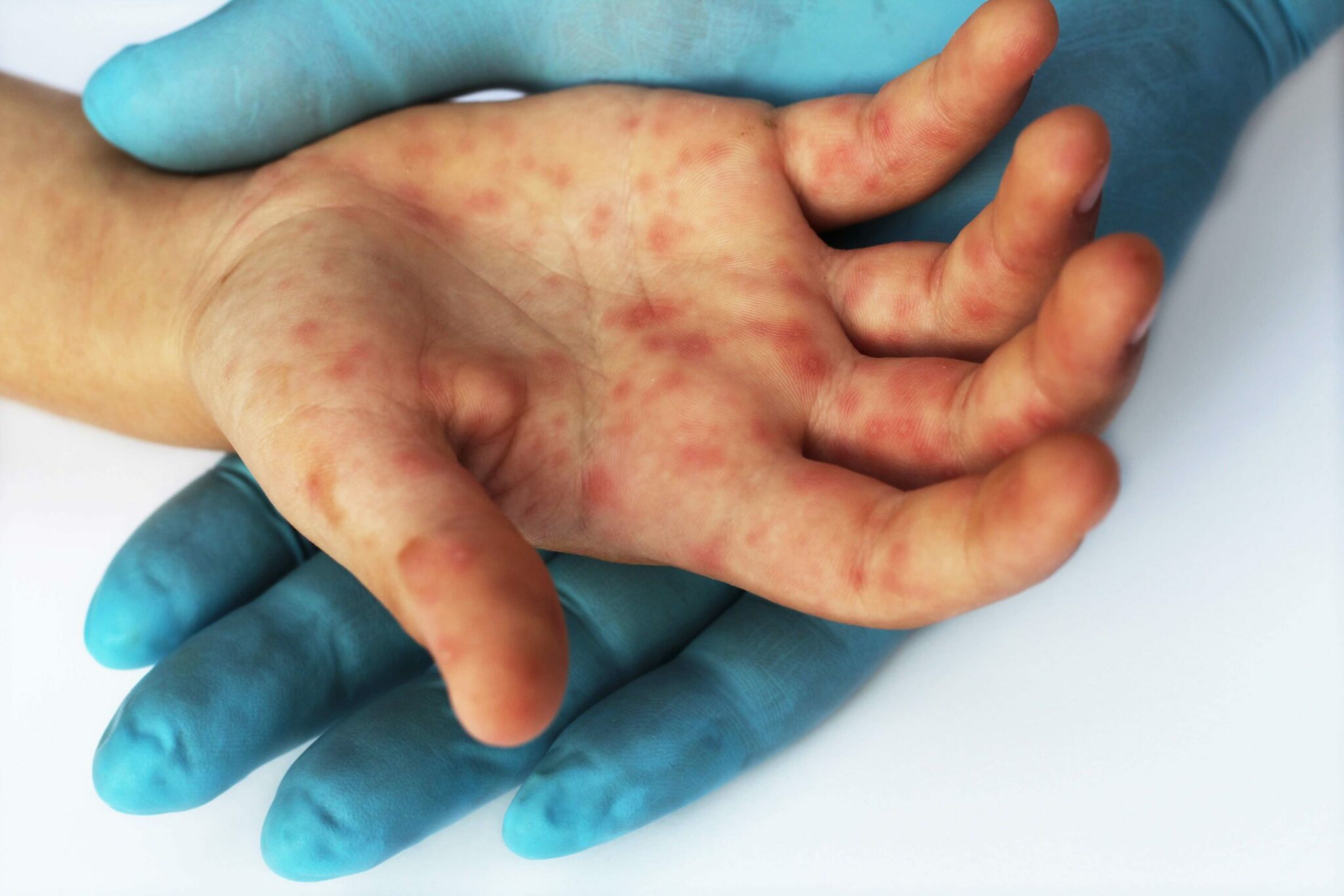Hand, Foot and Mouth Disease

Hand, foot and mouth disease is a contagious disease typically characterized by fever, sore throat, and rash on the palms or soles of the feet. Affected children might also have a decreased appetite and blister-like sores in the mouth. Hand, foot, and mouth disease is most common between the spring and autumn and most commonly affects children under the age of five.
Hand, foot, and mouth disease is caused by a virus. It should not be confused with foot and mouth disease (an illness that strikes cattle, sheep, and pigs) as the two are not related. In fact, hand, foot, and mouth disease cannot be transmitted to or from animals.
The condition is spread through close contact with a child who is coughing or sneezing, contact with faeces or contaminated objects, and contact with blister fluid. Children are especially vulnerable because they are frequently in close contact with other children in daycare and play group settings.
The good news? Most kids develop immunity to the disease, so they’re less likely to catch it as they grow. And the condition is usually not serious, most children recover within 7-10 days.
Doctors can usually diagnose hand, foot and mouth disease by looking at the rash and gathering basic information about symptoms. Your child generally won’t need any treatment, other than a little TLC and possibly an over-the-counter medicine to ease any pain and lower the fever (note that children shouldn’t be given aspirin). Since this is a viral illness, antibiotics won’t help.
Children may become dehydrated if the mouth pain is so severe that they are unable to drink. Be sure to encourage plenty of fluids and see the doctor right away if your child is producing less urine than usual, the mouth or lips appear dry, or the eyes appear sunken.
Keep in mind that if your child has mouth sores, milk or water may be easier to swallow than acidic beverages such as juice or soda. Eating ice cream or sorbet, and sucking on ice pops can also help ease mouth pain.
Finally, to prevent future recurrences, wash your hands often and encourage your child to do the same. Also be sure to disinfect commonly used items like toys and avoid contact with people who are infected.
Sources:
- Centers for Disease Control & Prevention
- Hand, Foot, and Mouth Disease, Mayo Clinic
- Hand, Foot and Mouth Disease, National Institutes of Health.
Powered by Bundoo®










